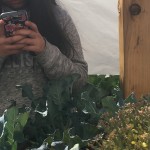Since Arizona closed schools March 16, like my Stories from School colleagues and many other people around the world, I have experienced alternating episodes of hope, tears, escapism, distress, mental dispersal, zen, joy, cookie cravings, indignation, lassitude and focused motivation. As a parent I have provided effective organizational strategies to limit my kids’ screen time and keep their brains and bodies moving… on some days.
Teaching and learning has shifted quickly. One comment I have heard again and again in conversations with educators across the state and country is “Even if educators are ready to prepare online learning, and even if families have access to the internet, we can’t assume that the students even know how to use a computer.” These comments are largely from elementary and middle school educators. I think it’s an extremely valid point in most cases, in most schools, but not in our Title I junior high.
Leah Clark’s recent blog “Seeing the Bright Side” made me consider the skills and dispositions our students will develop throughout their experience of remote learning. It made me proud, because in our junior high program, we have been working on these skills from day one in August. There are several key aspects of Rhodes to Success that give our students a shot with remote learning, despite many socioeconomic barriers and the inherent challenges we all face.
One-to-one technology. Each student has a computer checked out to them, housed in their advisory classroom at night. They have been using computers daily for the entire year, as well as putting them away when a different mode of learning made more sense. They have practiced daily skills that other kids might find clunky: how to use tablet mode, using screenshots and taking photos, bookmarking sites and configuring the Chrome browser with useful extensions, checking to see if their microphone is muted, and even basic troubleshooting (including the classic “Did you try restarting it?”) It’s obvious how this basic familiarity with the technology will pay off.
Online learning platforms. Students have been using Summit Learning and Canvas all year. They know how to access resources, and many are even becoming excellent independent notetakers (not as many as I would like, but, hey, it’s all a process.) They see how projects are scaffolded on these platforms, how the teacher’s instruction will support the assessment, and the mechanics of submitting work and seeing feedback. They can view their progress and upcoming due dates. They have a sense of which assignments are true assessments, and which are there as stepping stones. I can think of few Title I schools where the same holds true in 7th grade.
Flexible scheduling. Twice a week, students were able to choose their classes. There were some restrictions for students receiving special education services or English language classes, and often teachers would “pre-slug” groups for interventions, but still, students had some agency over which classes they took that day. They could double up on a class where they needed the extra time or skip a class where they were ahead. During the school closure, we have offered students a daily planner they can use to choose which virtual class sessions they will attend and what academic goals they have for the day.
Teacher-led instructional teams. Our interdisciplinary team has worked together on a daily basis to meet the needs of our shared students all year. Because of strong teacher leadership and multiple meetings each week, we have developed consistent systems of communication and file management that are really paying off now that we are not in the same building! The Google chats still feel the same. The meeting minutes with our action items are still in the same folders. I can visualize and mentally hear the voices of the people sending me emails. More importantly, we can strategize around how to best communicate with parents and students. At first, parents were inundated with emails and texts as situations changed quickly. Over the past two weeks, our team has worked to streamline communication, relying on familiar modes such as a weekly newsletter, a team website which is constantly updated, and parent and student email and text lists. Because we are coordinating communication, it’s possible to get help with Spanish translations of everything. Also, when it came time to mail home packets, a team packet went home, with assignments for these students by the teachers they have had all year. I don’t believe this is the case at most junior highs! Hopefully, all of this will make it easier for our students to engage as instruction moves forward.
Relationships & Self-Direction. All year, we have implemented a mentoring program that is included in Summit Learning. The program is challenging to implement, but at the very least, we have set aside time each day for students to engage in “self-directed learning” and many teachers have rich mentoring relationships with students. During SDL, students set and achieve personal academic goals, and as teachers, we mentor and provide instructional support. By and large, students know that their teachers and mentors care, and are there to support them. They are learning that education is something they do, not something that is done to them. They have also started to learn which classmates will help them achieve their goals, and which will not.
I can’t sugar-coat the harsh truth that despite efforts to distribute student laptops for home use, many families will still not be able to access any more than the printed packet we sent home. I also know for a fact that some of those packets will be returned to sender. I have been in tears about the inequities in what we are able to provide, despite our best efforts.
None of the strengths of our program can compensate for the challenges that many students will face, and the learning that may be lost by August. Still, I do believe that the students from our school stand a better chance than many during this crisis.











Comments 1
I love the flexible schedule idea. What a great way to allow students to pick what they want, when they want and how. I’m sure it has it’s challenges but I bet it also increases excitement in student learning. Thank you for sharing. I have never thought about doing something like that, but will definitely be thinking about how we can make that happen.